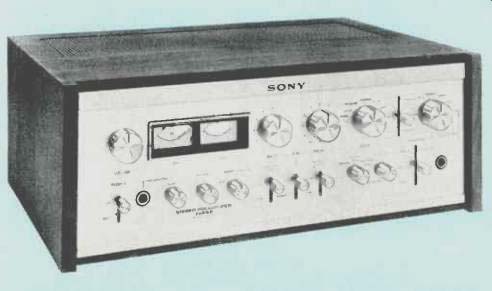
MANUFACTURER'S SPECIFICATIONS
Maximum Output Voltage (less than 0.1% THD): 4.5 volts at 100k, 3.0 volts at 5k.
Harmonic Distortion: Less than 0.03% at rated output.
IM: Less than 0.05% at rated output.
Tone Controls: Bass, +/-10 dB in 11 two-dB steps at 50 Hz; treble, +/- 10 dB at 10 kHz in 11 two-dB steps.
Turnover Frequencies: 250 and 500 Hz; 2.5 kHz and 5 kHz. Filters: High, 12 dB per octave above 9 kHz; low, 12 dB per octave below 50 Hz.
Sensitivities: PHONO 1, 1.2 mV and 0.06 mV; PHONO 2, 1.2 mV; MIC 0.5 mV; high level inputs, 110 mV.
S/N Ratios: PHONO, 73 dB (IHF "A"); high level input, better than 90 dB.
Headphone Output: 0.5 V at 8 ohms, 5 Vat 10 kilohms. Main Outputs: 1, 1 volt at 3 kilohms or higher; 2, 0.3 volts into 6 kilohms or higher.
Power Consumption: 23 watts.
Dimensions: 15 3/4 in. W, 5 3/4 in. H, 12 3/4 in. D.
Weight: 19 lb., 8 oz.
Price: $ 549.50.
There are not too many top-quality preamps available these days, but the Sony TA-2000F must certainly be included among them. This is a later version of the TA-2000 which we reviewed back in December 1968. This is a very handsome looking unit with quite an array of controls. Reading along the top from left to right, these are as follows: volume control, then the two large VU meters, bass and treble switches, function selector, a lever switch for tuner and phono 1, and at the extreme right, the main input selector switch for two tape inputs, three auxiliaries, phono number 2 and microphone. The bottom row of controls include a lever switch for power on/off, three controls for headphone level, balance, and meter level, followed by three switches for the tone control turnover frequencies and a cancel position. Next is the high- and low-pass filter switch, a microphone input mixing control, and a lever switch for tape monitor. On the left side of the panel is the headphone jack, and on the right is an auxiliary input jack. The rear panel, shown in Fig. 1, has 25 input and output jacks with five separate input level controls, a two-position output level switch, and a phono impedance selector which gives a choice of 33, 47, or 82 kilohm impedances as well as 10 and 30 ohms at a higher sensitivity. Also on the rear panel are four a.c. outlets and a DIN socket.
In spite of the number of controls, the front panel does not look over-crowded--probably because of the use of lever switches. The tone controls are both step types and bass turnover frequencies are 250 and 500 Hz. These are selected by a lever switch mentioned above. The advantage of a 250 Hz turnover is the fact that the extreme bass can be lifted without affecting the 150 Hz to 300 Hz range, thus avoiding that "chesty" coloration on speech. Treble turnover frequencies are 2.5 kHz and 5 kHz which makes a very flexible arrangement when used in conjunction with the filter switch. This gives a 12 dB per octave roll-off above 9 kHz. The low frequency filter attenuates below 50 Hz-also at 12 dB per octave. The rest of the controls are fairly conventional-although few preamps boast the luxury of a headphone level control! The original 2000 had a simple two-position meter level switch but the new model has a three-position control, plus independent adjustment for microphone inputs. Probably more important innovations are the tone control turnover switches and the use of FETs for the "front-ends." The other transistors are special high-voltage types, as a 150 volt line is used. The total number of transistors is no less than 96 of which 26 are FETs. And there are 15 diodes--a far cry indeed from the old tube amplifiers!
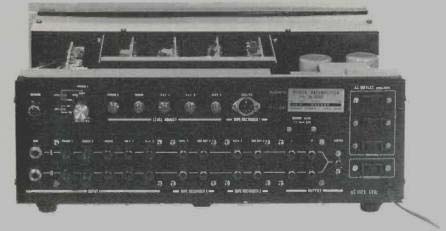
Fig. 1--Showing the rear panel.
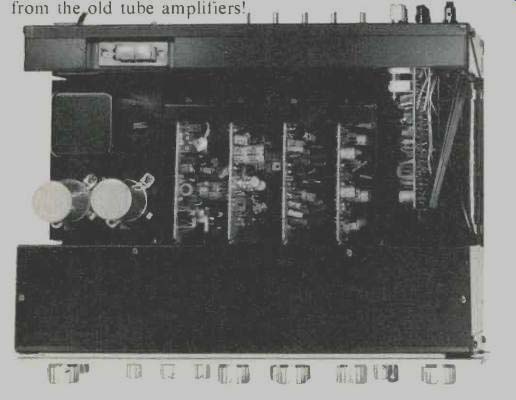
Fig. 2--Inside view.
Measurements
Figure 3 shows the output voltage and distortion and it will be noticed that the distortion is insignificant below an output of four volts. Variation in the range from 40 to 10,000 Hz was negligible. Figure 4 shows the effect of the high- and low-pass filters and Figs. 5A and 513 show the tone control characteristics. The steps are approximately 2 dB each. Overall response with the controls at flat positions was 1 dB down at 10 Hz and 3 dB at 80 kHz. The square wave response, as might be expected, is excellent and the 40 Hz, 1 kHz, and 20 kHz waveforms are shown in Fig. 6. Phono input was just over I mV for 1 volt output, and the overload point was 280 mV-which is exceptionally good. One of the advantages of a high line voltage is the greater permissible voltage swing.
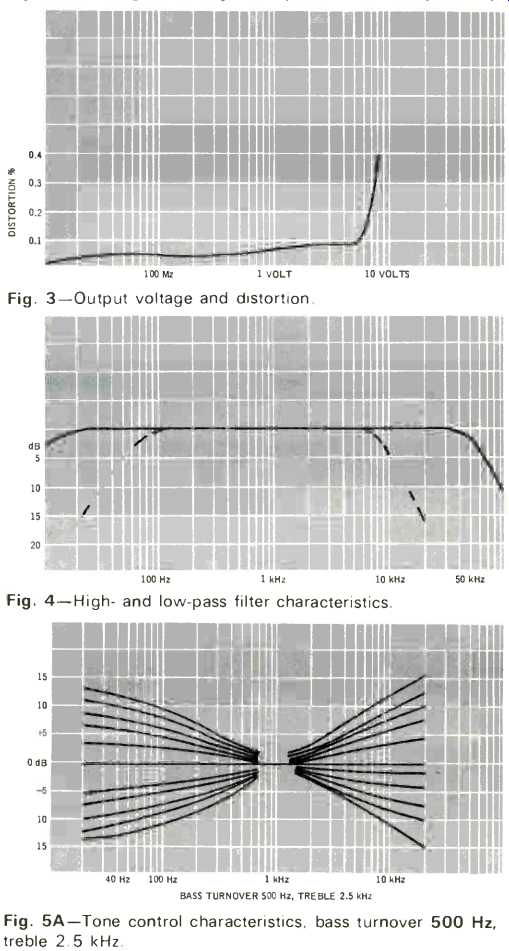
Fig. 3--Output voltage and distortion.
Fig. 4--Highand low-pass filter characteristics.
Fig. 5A--Tone control characteristics, bass turnover 500 Hz, treble 2.5 kHz.
Noise and hum, using the IHF "A" weighting, was -72 dB with input shorted. Tuner and other high level sensitivities were 85 mV for 1 volt output and noise level was-96 dB with inputs shorted and-76 dB unweighted. Microphone sensitivity was 1.4 mV and the noise level was-55 dB--rather better than the specification. So much for the measurements.
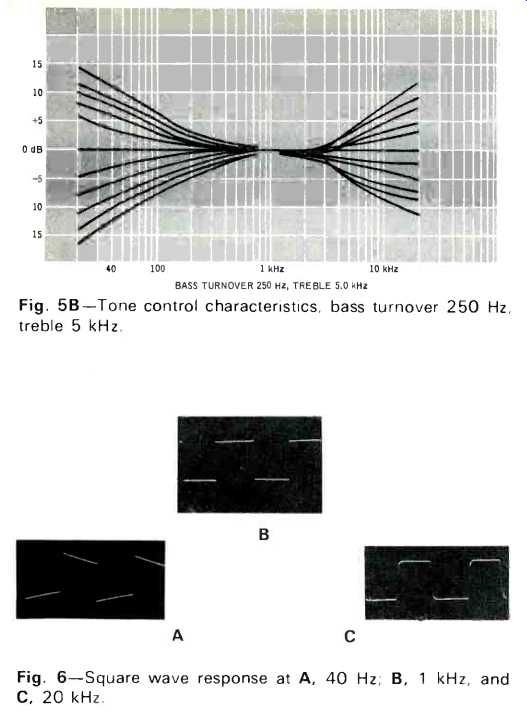
Fig. 5B--Tone control characteristics, bass turnover 250 Hz, treble 5 kHz.
Fig. 6--Square wave response at A, 40 Hz; B, 1 kHz, and C, 20 kHz.
Listening Tests
For most of the listening tests, the 2000F was paired with a Sony TA-3130, although some larger amplifiers were also used on occasion. Phono cartridges were an ADC 25 and a Decca Mk-5-one connected to each phono input. The three-way lever selector switch is featured in other Sony amplifiers, such as the 1130, and it enables a quick change to TUNER input, PHONO, or whatever is selected by the main switch. This was found to be most convenient and the output from a tape recorder was taken to one of the auxiliary inputs. Output from the tape monitor sockets was taken to a Sony 1000 decoder which, in turn, was connected to another amplifier supplying the rear channels. A Soundcraftsmen equalizer was connected between the preamp and main amplifier for some of the tests.
I must say the 2000F was a pleasure to use--in particular the choice of tone control turnover frequencies (something I have advocated for many years) is a most useful refinement. As a collector of old 78 records, I must confess I like a continuously variable low-pass filter but for most people the 9 kHz cut is a satisfactory compromise. The effects of tracing distortion, etc. can be minimized without sacrificing too much of musical value in the process. Incidentally, the "cancel" position for the tone controls produced no measurable effect on distortion--neither was there any discernible effect on square wave performance as high as 20 kHz but I suppose there are always those purists who feel there must be some kind of distortion or phase shift in a tone control system--even at a "flat" position. Summing up then, the Sony 2000F is recommended--to those discriminating people who want a versatile, high performance preamplifier which can be used with a top quality power amplifier without degrading the result. It is a most complex piece of equipment, nicely styled and well made. It is not particularly cheap, but this kind of engineering just has to be expensive!
-T.A.
(adapted from Audio magazine, Nov. 1972)
Also see:
Sony 1130 Integrated Amplifier (Equip. Profile, Feb. 1972)
Sony 1055 and 5055 amp and tuner (ad, Aug. 1973)
Sony Tuners and Amplifiers (ad, Mar. 1973)
Sony STC-7000 preamp/tuner (Jan. 1973)
Sony components (ad, Sept. 1975)
Sony X-series turntables (Nov. 1978)
= = = =